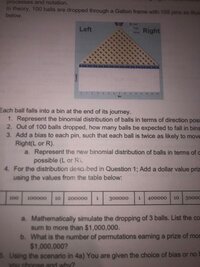
How do I go about solving question 1 ? The end of the question that was cut off is "direction possible (L&R)
I'd assume i find expected value then the standard deviation? The guide my teacher gave to help us said we should be using nCr notation to find correct coefficients and variable powers. Can anybody help explain please.

